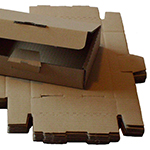Sustainability
Many consumers are beginning to think 'greener' when buying products.
Designers and Manufacturers have a responsibility to reduce the environmental impact of the products they create by considering the implications of Social, Economic and Environmental sustainability.
The Six R's
RECYLE |
 |
How easy is it to take apart?
How can the parts be used again?
How much energy is needed to reprocess parts? |
REUSE |
 |
Which parts can be used gain?
Has it another good use without processing? |
REDUCE |
 |
Which parts are not needed?
Do we need as much material?
Can we simplify the product?
How much energy is needed to create it? |
REFUSE |
 |
Is it really necessary? Do we need a newer version?
Is it going to last?
Is it being driven by current trends and fashions? |
RETHINK |
 |
How can it do the job better?
Is it energy efficient?
Has it been designed for disassembly? |
REPAIR |
 |
Which parts can be replaced?
Which parts are going to fail?
How easy is it to replace parts? |
Manufacture
-
Is the product going to be mass produced? Made by robots or people? Does it require a skilled workforce (more expensive)?
-
How does technological change affect the manufacture of your product?
-
Is the product "built to last"? Will it function efficiently for a long time or hjas it got built in "planned obsolesence"?
-
Life Cycle Analysis is concerned with looking at all stages of the 'life' of a product. This involves:
-
How are Raw materials harvested or made?
-
How is the product made?
-
What does it cost to transport and distribute the product. How will it be transported? Where does it need to go?
What will it cost to distribute?
Does it need additional packaging for protection or advertising?
-
How will the product be used? What does it do? Does its use cause environmental damage?
-
How can it be recycled?
-
Is it environmentaly friendly?
Does it need care and maintenance?
-
How will the product and the manufacturing waste be disposed of?
Is it biodegradable?
 |
Eco-footprint is the measurement of the effect our actions (or products) have on the environment. You need to design with the environment in mind. This means not only considering the initial stages of the designing but what will happen to your product at the end of its life cycle. Can it be reused etc? |
 |
Energy Can it be manufactured using renewable energy (wind, solar, geothermal, hydro, tidal)? Are the raw materials and resources used during manufacture renewable or is it depleting natural supplies (paper from rainforest trees etc) |
 |
Sustainability 234-238, 328-331 |
|









